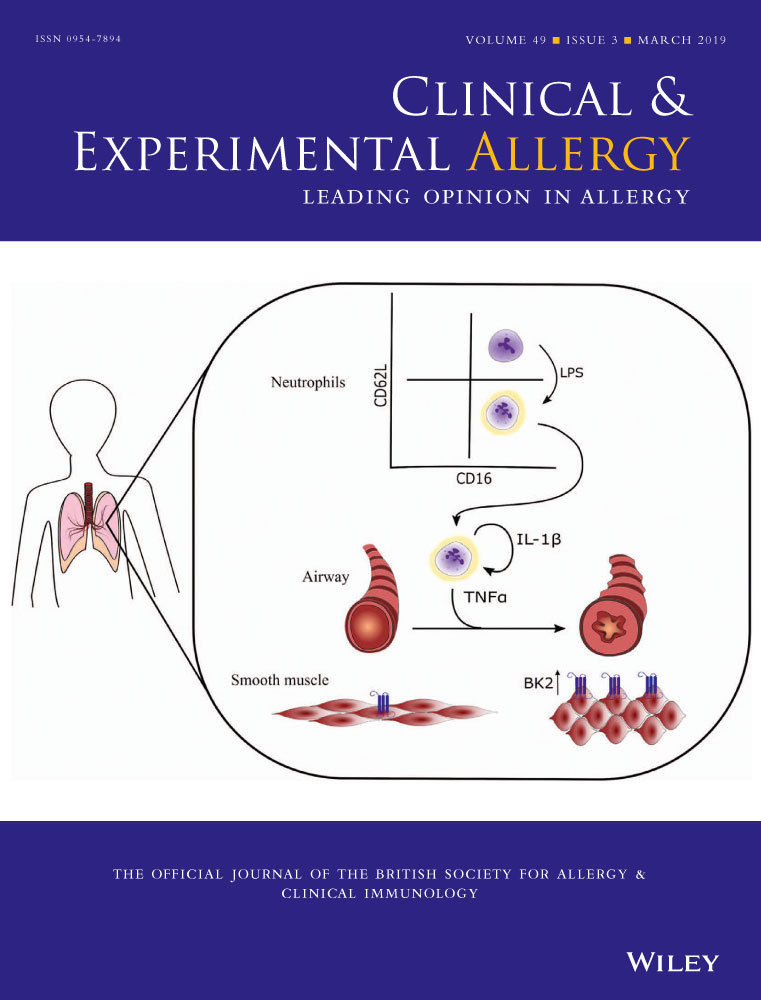Best of the Other Journals
THE DATA REGISTRY OF THE EUROPEAN COMPETENCE NETWORK ON MASTOCYTOSIS (ECNM): SET UP, PROJECTS, AND PERSPECTIVES
Valent P et al. J Allergy Clin Immunol Pract. 2019;7:81-7
https://doi.org/10.1016/j.jaip.2018.09.024
There are key knowledge-gaps in our understanding of mastocytosis. The European Competence Network on Mastocytosis set up the mastocytosis registry in 2012, which has collected data from more than 3000 patients from 12 countries across Europe and the USA up until 2018. This article reviews the background, set-up and current projects of derived from the registry. Some baseline data are presented but of more interest, the article provides a list of areas being analysed by the group for research outputs over the next few years, including clinical features and prognostic factors. A reminder of the potential and value of collaborative working.
A PATCH TESTING INITIATIVE FOR THE INVESTIGATION OF ALLERGIC CONTACT DERMATITIS IN A UK ALLERGY
Practice: A Retrospective Study
Watts TJ et al. J Allergy Clin Immunol Pract. 2019;7:89-95
https://doi.org/10.1016/j.jaip.2018.08.030
This UK adult allergy centre report results of patch testing for allergic contact dermatitis in 156 patients, something more commonly undertaken within dermatology clinics. Allergic contact dermatitis was confirmed in 49% of patients, and the responsible allergen was detected in 87% of cases using the British Standard series. A comparative table of the commonest allergens found across the globe are presented. The authors recommend limonene and linalool are added to the test series and suggest the value of provision of patch-training for allergic contact dermatitis to allergists.
TREATMENT OF URTICARIAL VASCULITIS: A SYSTEMATIC REVIEW
Kolkhir P et al. J Allergy Clin Immunol. 2019;143(2):458-466
https://doi.org/10.1016/j.jaci.2018.09.007
The authors undertook a systematic review of the efficacy of the available treatment of options for urticarial vasculitis—a variant of small vessel cutaneous vasculitis, characterized by urticarial rashes and evidence of leukocytoclastic vasculitic changes in histology. They searched 7 databases and identified 261 eligible studies. There are no approved therapies for urticarial vasculitis and the standard therapies for urticaria that is H1-antihistamines, montelukast, danazol, H2-antihistamines, pentoxifylline, doxepin and tranexamic acid are ineffective and recommended management options are based on case reports and retrospective studies. However, in over 80% of patients in the review, systemic corticosteroids were found to be effective. Immunomodulatory therapies are also used to help reduce the dose of systemic corticosteroids and therefore the potential severe side effects. Therefore, further studies that is prospective studies, on the management of urticarial vasculitis are required.
STRATEGIES FOR SUCCESSFUL MANAGEMENT OF SEVERE ATOPIC DERMATITIS
Brar KK et al. J Allergy Clin Immunol Pract. 2019;7:1-16
https://doi.org/10.1016/j.jaip.2018.10.021
This article from the ‘clinical management review’ series provides a wonderfully practical update on the management of severe atopic dermatitis for the allergist-in-training. From differential diagnoses to a step-wise algorithm for treatment. It contains a nicely summarized comparison of the most commonly used severity scoring systems and systemic treatments which may be handy in clinic-based discussions with families.
WHEAT-DEPENDENT COFACTOR-AUGMENTED ANAPHYLAXIS: A PROSPECTIVE STUDY OF EXERCISE, ASPIRIN, AND ALCOHOL EFFICACY AS COFACTORS
Christensen MJ et al. J Allergy Clin Immunol Pract. 2019;7:114-21
https://doi.org/10.1016/j.jaip.2018.06.018
The group from the Odense Research Center for Anaphylaxis present data from a series of oral food challenges to assess the contribution of co-factors in 25 patients with wheat-dependent exercise-induced anaphylaxis. They noted a significant impact of aspirin and exercise on reaction threshold and severity, with aspirin causing the greatest reduction in threshold. The effect of alcohol was less uniform. A synergistic effect on threshold reduction, but not severity, was noted with exposure to more than 1 co-factor. Importantly, different individuals had different relevant co-factors.




